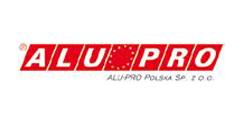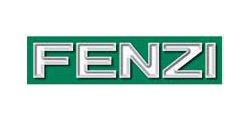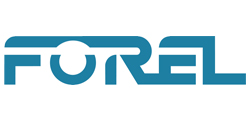In some science fiction films smart glass is already a reality. In the morning as soon as you get up major news is displayed on bathroom mirrors, in showers or on glass kitchen fronts. The images are controlled by swiping or voice commands. Glazed building façades are now also becoming vehicles for news and advertising messages – projecting moving images, obviously. Once at the office, you no longer need keys to enter the workplace because the scanner built into the screen authorises anyone arriving and opens the door – or denies them access. Many of these features are still fiction but various exhibitors at glasstec 2018 in Düsseldorf are specialising in the smart glass theme and showcasing interesting developments.
The fact is, smart glass is currently still often neglected in architecture and buildings even though so many functions would already be technically feasible today.
Various types of smart glass are known from smartphones. An article published by the Huffington Post in 2014 predicted that smartphones and tablets could very soon be completely transparent thanks to the glass technology used in them. This would have the advantage of just looking through the smartphone to scan all the streets around rather than having to use Google Maps to select a restaurant. The software then reveals where matching restaurants are located in the vicinity.
Smart glass can today already be found in many premium or luxury automobiles. Here the data generated by measuring sensors and the cameras built into the vehicle is interactively projected onto windscreens or side windows. Connection with passengers’ smartphones and tablets is, of course, also possible. And the light transmission of automotive glass can also be changed when subjected to sunlight (photo- chromic glass), heat (thermo-chromic glass) and electrical voltage (electro-chromic glass).

Glass partition walls used in offices can often be switched between transparent and opaque. Photos: Dorma Hüppe Raumtrennsysteme
Naturally, all of these features can also be used in the building sector. But when it comes to smart glass in buildings we often only think of the possibility of switching partition walls from transparent to translucent (meaning opaque). Especially in office architecture – where above all in expensive mega-cities mobile partition walls are needed to delimit new spaces in relatively small areas – glass with these properties becomes an increasingly important design tool. With the help of wall-mounted switches or remote controls users can select between transparent and nontransparent. This effect can be repeated any number of times because it is produced by liquid crystals in a conductive layer of these sheets. As soon as electrical current is applied the glass changes from opaque to transparent. This means, at a touch of a button, private or public conference situations, customer talks or working group meetings are possible on demand. After switching off the power supply the crystals re-arrange themselves and the glass returns to its opaque state.
Glass Surfaces to act as Light Sources
Another topic also related to this area is lighting. After all, efficient and quality lighting eases our everyday routines. This not only applies to corridors and staircases but also to premises as a whole. With OLED (Organic Light Emitting Diodes) new lighting technology is making increasing inroads in buildings.
Unlike conventional LEDs and all other light sources OLEDs emit their light across the entire surface. This feature makes them the first real flat area light sources that make completely new design options possible. Their light is roughly comparable to natural sky light while the light emitted by conventional light sources resembles sunlight. And what is more: their light is glare-free.
(...)
OLEDs are very thin measuring as little as 0.7 to 1.8 millimetres. Since they only reach temperatures as low as 30°C they do not require any cooling – which makes OLEDs also suitable for materials so far not appropriate for lighting applications. And they make for light in places so far not necessarily associated with illumination. In future, the window panes of office buildings can be switched on, for example, when pleasant ambient lighting is desired. Even all-round illumination in your glass shower back home is conceivable once OLEDs are integrated there. OLEDs can also be manufactured in 3D – in the shape of drinking glasses, for example. As soon as the user places them on the counter they start glowing thanks to the induction surface installed there.

OLEDs are surface light sources. Their light is comparable to natural sky light. Illustration: Philips
The O in OLED stands for Organic. In actual fact, no manufacturers use either animal or plant components. OLEDs consist of two glass sheets. During production very thin layers of hydrocarbon-based chemicals are vapour-deposited on these sheets. Since hydrocarbon is considered an organic chemical – these LEDs are referred to as organic. OLED manufacturing is a high-tech process. The numerous layers that emit the light are thinner than a human hair split 1,000 times lengthwise. During production individual atoms are actually stacked to emit natural light later on.
Usually one layer of aluminium is used as a cathode which is why OLEDs resemble make- up mirrors when switched off. If this aluminium is replaced by silver, which does not reflect so strongly after vapour-deposition, the OLED appears transparent. The possibility of emitting light from seemingly transparent glass without a visible light source when switched off is unique to this technology.
When incorporated into façades smart glass is capable of reducing energy costs because sunlight can be blocked or transmitted upon demand. What’s more, glass of this kind can prove a true alternative to mechanical shutters especially in buildings with extended glass façades – office buildings or skyscrapers. And if the technology required for this “migrates” from the housing into the glass direct you even save space that can be used for something else.
Engineers are also working on special coatings that make glass glare-free and self-cleaning. These coatings can increase the performance of solar cells and thereby substantially increase the generation of solar energy. Unfortunately, many of these projects have not developed beyond the prototype stage and are not yet market ready. Frequently, the material and installation costs are too high and the service life is still too short.
|
Has the industry probably slept through a development?
This is what we wanted to know from Professor Dr. Ulrich Knaack of TU Darmstadt.
Professor Knaack, in your opinion what will smart glass façades be capable of in ten years from now? Ulrich Knaack: Exciting question! Yes, there are many interesting things under development including display glass and OLEDs. And yes, as soon as we introduce these into the building skin, façades will become more active and will be able to contribute more to the function of the building. You could imagine that not only partition walls are controlled but the façade itself, thereby turning into a display and, hence, part of an office. Like the desktop that people are working on and not only as a screen for communication and information but as a workstation – comparable to PC screens today.
Why is the development of these technologies only making such modest progress?
Ulrich Knaack: Modest – well – we are dealing with buildings here rather than consumer goods. Buildings come with high expenses. They have to “work” for a long period and meet high safety demands due to their size and possible consequential damage. Their development and production are correspondingly complex. Looking at glass in isolation you can say that it has made enormous leaps in terms of material development, integration in energy generation and control as well as in design terms. The transparent house is possible today! And within just one generation of scientists, engineers and designers. Hardly any other material has achieved this. But this is only the beginning and new themes are already on the horizon with an impact we can only guess. And like with all developments we are called upon to not only develop technical aspects but also function. What functions do we really want to use or which ones will we use and how; what costs are we prepared to pay for these functions? These are the most exciting development questions. In a nutshell: What is in this new technology for us and what is it worth to us?
|
GLASSTEC, 23-26 October 2018 in Düsseldorf Some exhibitors at glasstec in Düsseldorf will be picking up on the smart glass theme presenting intelligent approaches to visitors.
Matthias Fischer
Całość artykułu w wydaniu drukowanym i elektronicznym
Inne artykuły o podobnej tematyce patrz Serwisy Tematyczne
Więcej informacji: Świat Szkła 03/2018

































